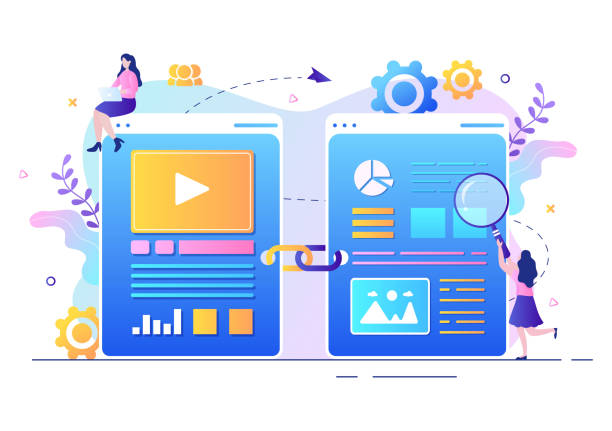The Importance of Fast Website Design in Today’s Digital World
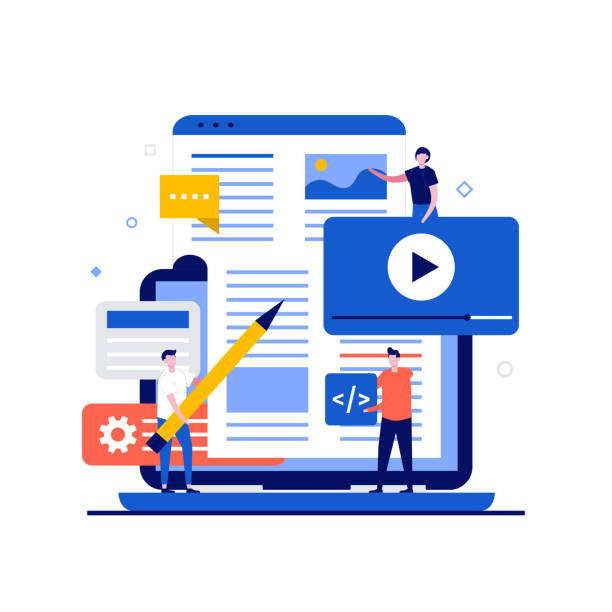
In the current era where speed is paramount, fast website design is more vital than ever.
Internet users have no patience for page loading, and every second of delay can mean losing visitors, customers, and ultimately, revenue.
The importance of speed in #UserExperience and #SearchEngineOptimization (SEO) is fully proven.
Websites that load slowly not only have higher bounce rates but also achieve lower rankings in search results.
Google and other search engines consider loading speed as a crucial ranking factor, so for visibility and audience attraction, speed optimization is essential.
This issue is not limited to e-commerce websites; every website, from personal blogs to news and educational platforms, requires #high_speed to retain and attract its audience.
In fact, research has shown that even a half-second delay in page loading can have a significant negative impact on the #conversion_rate.
Therefore, investing in the knowledge and tools required for website speed optimization is considered a smart investment.
This process encompasses various aspects, from choosing suitable hosting to optimizing codes, images, and utilizing Content Delivery Networks (CDNs).
In this article, we will comprehensively and educationally cover all these aspects so that you can design a website with the highest speed and best performance.
Paying attention to these points not only helps increase user satisfaction but also directly impacts the success of your online business.
Are your e-commerce website visitors leaving before making a purchase? Worry no more! With Rasaweb’s professional e-commerce website design services, solve the problem of converting visitors into customers forever!
✅ Significant increase in conversion rate and sales
✅ Unparalleled and engaging user experience
⚡ Contact us now for a free consultation!
Key Factors Affecting Website Loading Speed

To achieve fast website design, identifying and understanding the main factors affecting website loading speed is essential.
These factors include technical infrastructure, website content, and how they interact with each other.
Among the most important factors are #web_hosting, #file_size, and #code_optimization.
Low-quality web hosting and slow servers can cripple even the most optimized code.
On the other hand, even with the best hosting, large images, unoptimized videos, and bulky JavaScript and CSS codes can severely reduce loading speed.
Furthermore, using Content Delivery Networks (CDNs) to serve users from the nearest geographical server can significantly reduce latency.
Also, the number of HTTP requests a page needs for complete loading is an important factor.
The fewer these requests, the faster the loading.
This can be achieved by combining and compressing CSS and JavaScript files.
The importance of #GZIP_compression for text files and enabling #browser_caching to store resources on the user’s device should also not be overlooked.
In the following sections, we will expertly and descriptively cover each of these items and their optimization solutions so you can adopt a systematic approach to improving your website’s speed.
Have you ever considered the direct impact of web hosting choice on your site’s speed? This is a #questionable_content that many web designers overlook.
Code and Website Structure Optimization Techniques
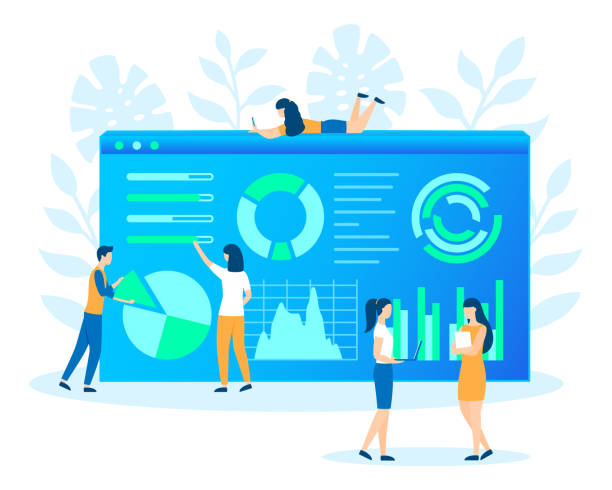
One of the main pillars in achieving fast website design is optimizing HTML, CSS, and JavaScript codes.
This process includes removing unnecessary code, compressing, and optimizing their loading order.
Using #Minification to reduce the size of CSS and JS files, which involves removing whitespace, comments, and extra characters, is a crucial first step.
Additionally, #Concatenation (combining files) to reduce the number of HTTP requests can lead to significant improvements.
Instead of loading multiple separate CSS and JS files, merge them into fewer files.
Placing CSS at the beginning of the HTML file and JavaScript at the end (before the closing </body> tag) is also a #key_tip.
This allows the browser to load styles first and render the page quickly, then proceed to load scripts which may require more time.
Using the async and defer attributes in script tags can also help with asynchronous loading of JavaScript and prevent render-blocking.
Furthermore, to prevent #render_blocking issues, using inline CSS for above-the-fold content is recommended so users can immediately see a portion of the page.
For demonstrating the impact of these techniques, we can provide a table of common code optimization methods and their effectiveness:
| Technique | Description | Impact on Speed |
|---|---|---|
| Minification (Compression) | Removes whitespace, comments, and extra characters from CSS/JS files | Excellent (reduces file size) |
| Concatenation (Combining Files) | Merges multiple CSS/JS files into a single file | Good (reduces HTTP requests) |
| Lazy Loading | Loads images and videos only when they enter the user’s viewport | Excellent (reduces initial page load) |
| CSS Delivery Optimization | Places critical CSS inline and loads the rest of the CSS asynchronously | Excellent (increases initial render speed) |
These #specialized_techniques should be part of every fast website design process to ensure the best performance.
Image and Multimedia Content Optimization

Images and multimedia content like videos often constitute the largest portion of a web page and can significantly impact loading speed.
Optimizing them is a crucial step in achieving fast website design.
The first step is #choosing_the_right_format.
New formats like WebP and AVIF can offer high-quality images with significantly smaller file sizes compared to JPEG and PNG.
Using these formats substantially reduces loading time.
In addition to format, #image_compression is also very important.
This compression can be done without perceptible quality loss (lossless) or with a slight quality loss (lossy).
Various online tools and CMS plugins are available for this purpose that can automatically reduce image file sizes.
The next step is #resizing_images to appropriate dimensions.
Loading a 2000-pixel image where only 500 pixels of space are available is a waste of bandwidth.
Use the exact dimensions required on your website.
Also, implementing #Lazy_Loading for images and videos is highly effective.
This technique ensures that multimedia content is loaded only when the user scrolls towards it and it enters the viewport.
This significantly reduces the initial page load and improves the user experience.
For videos, using streaming instead of fully loading the video file and compressing it into web-friendly formats like MP4 with H.264 or VP9 codec is recommended.
Overall, the more optimized your multimedia content, the higher your website speed will be, and you will literally have a #lightweight and efficient_website.
This is a #practical_tip that should not be overlooked.
Tired of your e-commerce website not generating as much revenue as its potential? Rasaweb, specializing in professional e-commerce website design, solves this problem permanently!
✅ Significant increase in sales and revenue
✅ High loading speed and unparalleled user experience
⚡ Get a free e-commerce website design consultation
The Impact of Web Hosting and Content Delivery Networks (CDN)
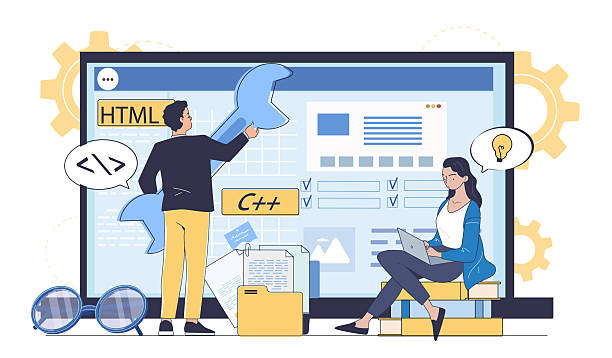
Choosing appropriate web hosting is one of the foundational decisions that directly impacts your website’s speed and performance.
Hosting with slow servers, limited resources, or improper configuration can slow down even the most optimized codes and images.
For fast website design, selecting high-quality hosting that supports SSD (Solid State Drives) for storage and new protocols like HTTP/2 or HTTP/3 is crucial.
Inexpensive shared hosting might be suitable for starting, but as website traffic grows, you will likely need options such as VPS hosting (Virtual Private Server), dedicated servers, or Cloud Hosting.
These options provide more resources and offer better performance.
The role of #Content_Delivery_Networks (CDNs) in increasing website speed is also not negligible.
A CDN is a network of servers distributed across different geographical locations worldwide.
When a user visits your website, the CDN delivers static content (such as images, CSS, JavaScript) from the server closest to the user.
This significantly reduces #latency and also lessens the load on your main server.
Using a CDN is a #technical_necessity, especially for websites with global audiences or high traffic.
Services like Cloudflare, Akamai, and MaxCDN are popular options that can dramatically help increase content loading speed.
This approach provides a #technical_analysis of the importance of infrastructure in overall website performance and shows that speed is not just limited to coding.
The Impact of Website Speed on User Experience (UX) and Conversion Rate

Website speed is not just a technical metric; it directly impacts #User_Experience (UX) and ultimately the #Conversion_Rate.
In the process of fast website design, it must be understood that a slow website can lead to frustration, premature page abandonment, and even loss of user trust.
Today’s users have little patience; studies show that most users leave a page if it doesn’t load in less than 2-3 seconds.
This means that every second of delay reduces opportunities for sales, sign-ups, or content viewing.
A fast website conveys a sense of #professionalism and #credibility to the user.
Users feel that the website is well-maintained and their needs have been addressed.
This leads to increased user satisfaction, improved engagement, and a greater willingness to interact with the site.
For instance, in an online store, the faster products and the purchasing process load, the higher the likelihood of a customer completing their purchase.
In other words, website loading speed is not just a technical factor, but a powerful tool for increasing sales and customer loyalty.
This is a #questionable_content why some businesses still do not pay enough attention to this vital aspect.
Improving website speed directly contributes to enhancing your business performance, and this is a #critical_factor in any digital strategy.
Tools and Metrics for Measuring Website Speed

After implementing fast website design techniques, it’s crucial to be able to measure and monitor your website’s performance.
Numerous tools are available for evaluating website speed, each offering specific metrics and helping you identify strengths and weaknesses.
Among the most widely used tools are #Google_PageSpeed_Insights, #GTmetrix, and #WebPageTest.
Google PageSpeed Insights provides a performance score for desktop and mobile, along with suggestions for speed improvement.
GTmetrix displays more details, including a Waterfall Chart, which shows the loading time of each resource and helps identify slow resources.
WebPageTest allows testing websites from various geographical locations and with different browsers, offering a deeper insight into the actual website performance.
Key metrics reported by these tools include:
- #FCP (First Contentful Paint): The time it takes for the first text or image content to render on the page.
- #LCP (Largest Contentful Paint): The time it takes for the largest content element to render on the page.
- #CLS (Cumulative Layout Shift): Measures the visual stability of the page.
- #TTFB (Time to First Byte): The time it takes to receive the first byte of the server’s response.
- #Speed_Index: A metric for the visual rendering speed of content during page load.
- #TBT (Total Blocking Time): The sum of all periods when the main thread was blocked, preventing page responsiveness.
For better understanding and #training_on_using these metrics, a table of key metrics and their importance is provided below:
| Metric | Description | Importance |
|---|---|---|
| LCP (Largest Contentful Paint) | Time to load the largest content element. | Indicates the speed of the main content for the user. |
| CLS (Cumulative Layout Shift) | Measures the visual stability of the page (absence of element shifts). | Direct impact on user experience and prevention of unwanted clicks. |
| FID (First Input Delay) / INP (Interaction to Next Paint) | Page responsiveness time to the first user interaction. | Importance for interactivity and page responsiveness. |
Understanding these metrics helps you to #expertly and #analytically evaluate and improve your website’s performance.
These tools are a #practical_guide for every web developer.
Common Mistakes in Website Design and Quick Solutions
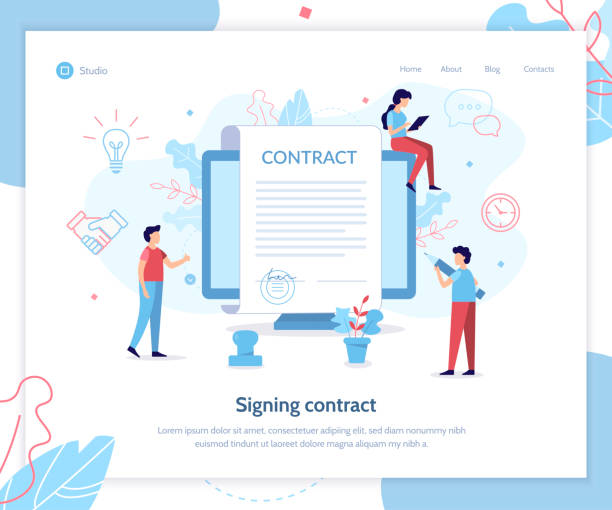
In the journey of fast website design, developers and website administrators often make mistakes that can severely impact loading speed.
Recognizing these errors and knowing their solutions can significantly help in saving time and resources.
One of the most common mistakes is #lack_of_image_optimization.
Using images with dimensions larger than actually needed or failing to compress them can place a huge burden on server bandwidth and the user’s browser.
Simple solution: Always resize images to the exact required dimensions and compress them before uploading.
Another mistake is the #excessive_use_of_plugins and third-party JavaScript scripts.
Every additional plugin or script means more code to load and process, which can reduce speed.
Solution: Use only essential plugins and optimize and asynchronously load third-party script codes (such as advertising codes or analytical tools).
#Lack_of_Caching is also a common error.
Without caching, every time a user visits a page, the server has to process and send all content again.
Solution: Use appropriate caching plugins for your CMS (like WP Super Cache for WordPress) and enable server-side caching.
Ignoring #mobile_responsiveness and #AMP (Accelerated Mobile Pages) can also degrade the user experience on mobile devices.
Given the increase in mobile traffic, mobile speed is even more critical than desktop speed.
Solution: Prioritize Responsive Design and, if needed, use AMP technology for important news or blog pages.
These #expert_tips will help you prevent speed drops caused by common mistakes and have a fast and optimized website design.
Worried about losing customers because you don’t have a professional e-commerce website?
With e-commerce website design by Rasaweb, forget these worries!
✅ Significant increase in sales and conversion rate of visitors to customers
✅ Professional and user-friendly design that builds customer trust
⚡ Get a free consultation from Rasaweb
Maintaining Website Speed After Design

Fast website design is not a one-time process; rather, it requires #continuous_maintenance and #periodic_optimization.
Over time, websites may slow down with the addition of new content, plugins, theme changes, and increased traffic.
Therefore, having a strategy for long-term speed maintenance and improvement is essential.
The first step is #regular_speed_monitoring.
As explained in the previous section, periodically use tools like Google PageSpeed Insights and GTmetrix to track your website’s performance.
Any sudden drop in speed can be an indication of a new problem.
The next step is #regular_updates of the CMS core, themes, and plugins.
New versions often include performance optimizations and bug fixes that can help improve speed.
However, at the same time, you must be careful that any update might cause problems itself, so always back up your website before a major update.
#Database_cleanup is also an important factor.
Databases cluttered with extra information, spam, and expired data can lead to website sluggishness.
There are tools for optimizing and cleaning databases that you should use periodically.
Review old and inactive content and, if necessary, #archive or #delete it.
Re-optimize old images that haven’t been optimized.
This is a #key_tip for maintaining your website’s health and speed.
Also, periodically checking for broken links and excessive redirects is important, as these can slow down page loading.
Ultimately, a fast and optimized website requires continuous attention, not just during the initial design phase.
This #analytical_approach helps you always stay at peak performance.
The Future of Web Design and the Role of Speed
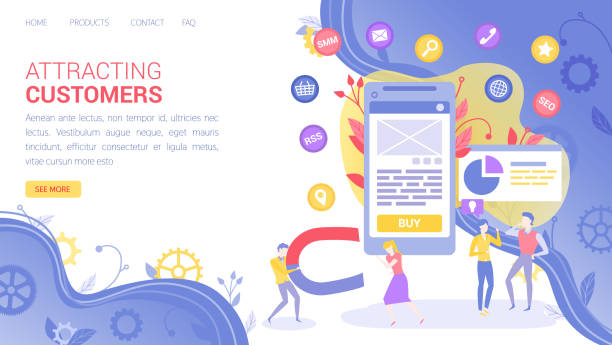
With the ever-advancing technology and user expectations, the future of fast website design will be more exciting and challenging than ever.
New technologies like #HTTP/3, #Web_Assembly, and #Progressive_Web_Apps (PWAs) are changing the web landscape and promise unprecedented speed and performance.
HTTP/3, built on the QUIC protocol, pledges to minimize latency and improve performance, especially on unstable networks.
The use of these protocols will gradually become standard, and websites must adapt to them.
Progressive Web Apps (PWAs) also offer a native app-like user experience in the browser, with capabilities such as offline functionality and instant loading.
This technology significantly contributes to website speed and responsiveness.
#Machine_learning_techniques can also be used in the future for automatic website optimization and predicting user behavior for faster content loading.
On the other hand, the increasing use of Internet of Things (IoT) devices and Virtual/Augmented Reality (VR/AR) further intensifies the need for extremely high speed and very low response times.
Web developers must be familiar with these #news and #new_technologies trends to design websites for the future.
The challenges and opportunities are endless, and those who continuously invest in performance and speed optimization will not only surpass their competitors but also deliver unparalleled user experiences.
Ultimately, speed is not just a feature, but a necessity for any website that wants to succeed in today’s digital world.
This is an #entertaining_content about what to expect in the future of the web.
Frequently Asked Questions
| Question | Answer |
|---|---|
| What is fast website design? | It refers to the process of building a website with high loading speed and optimized for excellent performance. |
| Why is site speed important? | Site speed directly impacts user experience, conversion rate, SEO, and search engine rankings. |
| What factors affect site speed? | Image size, optimized coding, use of CDN, caching, choosing suitable hosting, and the number of plugins. |
| How can website loading speed be increased? | Optimizing images, compressing files (CSS, JS, HTML), using browser caching, reducing redirects, and using a CDN. |
| What is CDN and how does it help site speed? | Content Delivery Network (CDN) that stores your site’s content on various geographical servers and delivers it from the server closest to the user. |
| What is the role of hosting in site speed? | The quality and type of hosting (shared, VPS, dedicated) greatly affect server response time and consequently, site loading speed. |
| Does using too many plugins reduce site speed? | Yes, each plugin loads additional code that can lead to site slowdown. Choosing optimized and essential plugins is recommended. |
| How to optimize images for increased site speed? | Compressing images without quality loss, using modern formats (WebP), setting correct dimensions, and Lazy Loading. |
| How does Caching help site speed? | Caching helps temporarily store site content in the user’s browser or on the server so that the site loads faster on subsequent visits. |
| What are the best tools for checking site speed? | Google PageSpeed Insights, GTmetrix, and Pingdom Tools are among the common and useful tools for analyzing and improving site speed. |
And other services of Rasaweb Advertising Agency in the field of advertising
Smart Website Development: A combination of creativity and technology for analyzing customer behavior by optimizing key pages.
Smart Website Development: A professional solution for attracting customers with a focus on using real data.
Smart Social Media: A professional solution for increasing sales with a focus on intelligent data analysis.
Smart Conversion Rate Optimization: An effective tool for digital branding with the help of custom programming.
Smart Custom Software: A combination of creativity and technology for digital branding by customizing user experience.
And over a hundred other services in the field of online advertising, advertising consulting, and organizational solutions
Online Advertising | Advertising Strategy | Advertorials
Resources
Website Speed Optimization: A Comprehensive Guide, Image Optimization for Website Speed Increase, How to Increase Your Website Speed?, Comprehensive Guide to Website Design
? Rasaweb Afarin Digital Marketing Agency, specializing in boosting your business by providing comprehensive SEO services, targeted advertising, and professional website design.
📍 Tehran, Mirdamad Street, next to Bank Markazi, Southern Kazeroun Alley, Ramin Alley, No. 6




